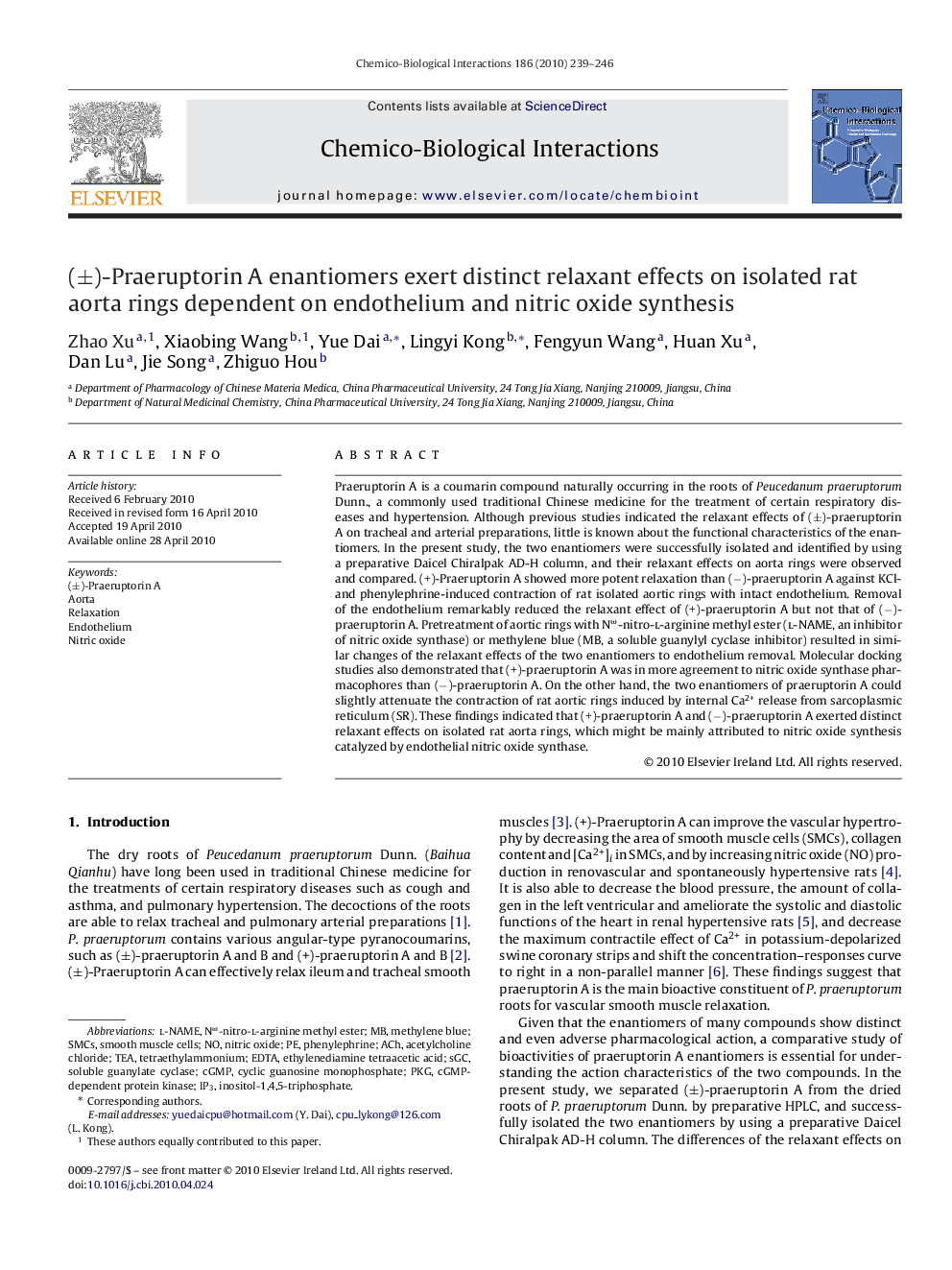| Article ID | Journal | Published Year | Pages | File Type |
|---|---|---|---|---|
| 2581912 | Chemico-Biological Interactions | 2010 | 8 Pages |
Praeruptorin A is a coumarin compound naturally occurring in the roots of Peucedanum praeruptorum Dunn., a commonly used traditional Chinese medicine for the treatment of certain respiratory diseases and hypertension. Although previous studies indicated the relaxant effects of (±)-praeruptorin A on tracheal and arterial preparations, little is known about the functional characteristics of the enantiomers. In the present study, the two enantiomers were successfully isolated and identified by using a preparative Daicel Chiralpak AD-H column, and their relaxant effects on aorta rings were observed and compared. (+)-Praeruptorin A showed more potent relaxation than (−)-praeruptorin A against KCl- and phenylephrine-induced contraction of rat isolated aortic rings with intact endothelium. Removal of the endothelium remarkably reduced the relaxant effect of (+)-praeruptorin A but not that of (−)-praeruptorin A. Pretreatment of aortic rings with Nω-nitro-l-arginine methyl ester (l-NAME, an inhibitor of nitric oxide synthase) or methylene blue (MB, a soluble guanylyl cyclase inhibitor) resulted in similar changes of the relaxant effects of the two enantiomers to endothelium removal. Molecular docking studies also demonstrated that (+)-praeruptorin A was in more agreement to nitric oxide synthase pharmacophores than (−)-praeruptorin A. On the other hand, the two enantiomers of praeruptorin A could slightly attenuate the contraction of rat aortic rings induced by internal Ca2+ release from sarcoplasmic reticulum (SR). These findings indicated that (+)-praeruptorin A and (−)-praeruptorin A exerted distinct relaxant effects on isolated rat aorta rings, which might be mainly attributed to nitric oxide synthesis catalyzed by endothelial nitric oxide synthase.
